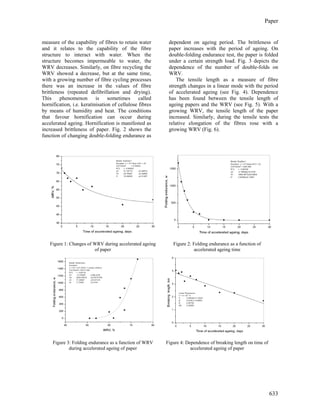The study investigates the impact of thermally accelerated ageing on the water retention value (WRV) of cellulose fibers in paper, revealing a significant decrease in WRV with prolonged ageing. Additionally, hornification is highlighted as a key process that enhances fiber brittleness and alters pore structure, emphasizing the relation between WRV and mechanical properties like folding endurance and tensile strength. The findings support the notion that chemical and morphological changes in cellulose fibers contribute to these aging effects in paper manufacturing.




